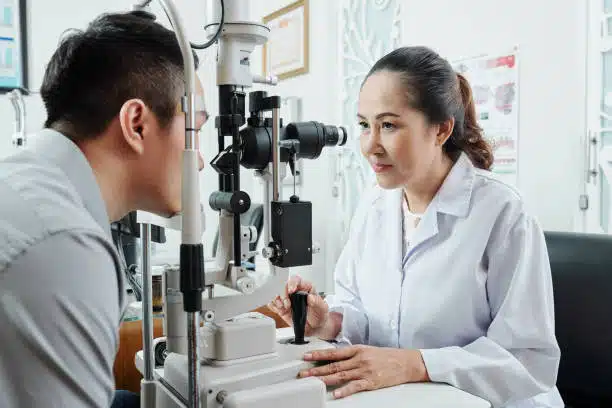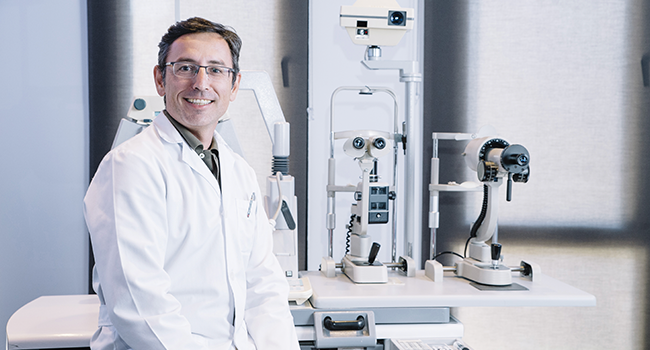Why Picking an Eye Doctor Optometrist is Important for Your Eyes
Why Picking an Eye Doctor Optometrist is Important for Your Eyes
Blog Article
Discovering the most up to date Technological Advancements in Optometry and What They Mean for Eye Doctors
From the accuracy of Optical Coherence Tomography to the nuanced understandings supplied by AI-driven diagnostic devices, these developments are establishing new criteria in person assessment and treatment. As these developments penetrate the method, optometrists are encountered with the challenge of embracing these tools to improve person results.
Developments in Diagnostic Devices
Advancing the field of optometry, innovations in analysis devices have actually transformed the means eye treatment specialists assess and diagnose visual problems and eye problems. The previous decade has actually experienced considerable technological advancements, enabling more thorough and exact examinations. Optical Comprehensibility Tomography (OCT), for instance, offers high-resolution cross-sectional pictures of the retina, enabling for the early discovery of diseases such as glaucoma and age-related macular degeneration. This non-invasive imaging technique has ended up being important in contemporary optometric practice.
An additional trick development is the intro of sophisticated corneal topography systems, which map the surface curvature of the cornea with precision. These devices are particularly beneficial for suitable get in touch with lenses and detecting corneal disorders. Additionally, electronic retinal imaging has actually transformed traditional ophthalmoscopy, using in-depth, panoramic sights of the retina that facilitate extensive visual examinations.
The advancement of wavefront aberrometry has actually additionally been essential, enabling the evaluation of refractive mistakes with unrivaled accuracy (Opticore Optometry). This innovation aids in tailoring corrective lenses and enhancing medical results for refractive surgical procedures. Collectively, these diagnostic improvements encourage eye doctors to deliver exceptional patient care, making certain early intervention and customized therapy strategies, inevitably boosting aesthetic wellness outcomes
AI in Patient Management
Structure on the foundation of innovative diagnostic tools, the incorporation of man-made knowledge (AI) in patient management represents a transformative jump for optometry. AI systems are increasingly employed to improve effectiveness, precision, and customization in person care. By evaluating vast amounts of information, AI can determine patterns and predict possible eye conditions, making it possible for eye doctors to customize interventions much more efficiently. This capability is crucial in taking care of persistent eye diseases such as glaucoma and diabetic retinopathy, where early discovery and continuous surveillance are key.
Additionally, AI-driven platforms assist in structured individual communications and administrative procedures. Automated scheduling, digital appointments, and personalized follow-up strategies not only boost person fulfillment but likewise maximize time monitoring for experts. These systems can triage clients based upon the urgency of their conditions, ensuring that those in essential need receive punctual focus.
Additionally, AI improves decision-making by providing optometrists with evidence-based referrals and therapy paths. By integrating information from digital health records, AI tools supply understandings that educate professional decisions, minimizing the threat of mistakes and boosting client results. As AI proceeds to advance, its function in person management will likely expand, reshaping the landscape of optometric treatment.
Breakthroughs in Retinal Imaging
In the world of optometry, retinal imaging has seen remarkable technological improvements that are improving analysis capabilities and client treatment. Advancements such as Optical Comprehensibility Tomography (OCT) and fundus photography have transformed how optometrists picture and assess the retina. OCT, specifically, offers high-resolution, cross-sectional photos of the retina, permitting for the in-depth examination of its layers. This ability is important for very early discovery and monitoring of problems like glaucoma, diabetic retinopathy, and age-related macular deterioration.
Enhanced imaging techniques like OCT angiography are additional refining analysis accuracy. Opticore Optometry. Such innovations facilitate the identification of min retinal changes that might signify illness development.
Additionally, advancements in expert system are boosting retinal imaging by making it possible for computerized evaluation of large datasets. These systems assist optometrists in determining patterns a measure of pathology, thus boosting analysis accuracy and efficiency. Jointly, these technologies are changing retinal imaging into a cornerstone of modern eye care, improving outcomes and increasing restorative opportunities.
Teleoptometry's Expanding Function
Teleoptometry is Learn More Here significantly ending up being a vital component of eye care, driven by developments in electronic interaction and analysis devices. As optometry embraces digital change, teleoptometry assists in remote appointments, permitting eye doctors to expand their solutions past standard boundaries. This is specifically useful in country and underserved locations where access to specialized eye care is commonly minimal. By leveraging high-resolution video clip conferencing and progressed retinal imaging, optometrists can perform comprehensive eye exams from afar, ensuring prompt diagnosis and treatment.
The combination of man-made intelligence (AI) more enhances teleoptometry, making it possible for the click here now evaluation of visual information and helping in the discovery of ocular conditions such as glaucoma and diabetic retinopathy. AI-powered formulas can quickly interpret intricate imaging information, offering eye doctors with valuable insights that strengthen clinical decision-making.
In addition, teleoptometry supports continuity of care via smooth combination with electronic health records (EHRs), enabling optometrists to maintain detailed individual backgrounds. When seeking advice from with various professionals., this makes certain that clients obtain consistent and tailored care even.
Despite these advantages, difficulties continue to be, consisting of guaranteeing information security and managing patient assumptions. However, teleoptometry represents a substantial stride in the direction of more obtainable, reliable, and patient-centered eye treatment. As modern technology evolves, its role is positioned to increase better.

Future Patterns in Eye Care
A myriad of innovative patterns is readied to reshape the future of eye care, driven by technical advancements and the evolving needs of clients. One substantial pattern is the assimilation of fabricated intelligence (AI) in diagnostics, which assures to improve the precision and efficiency of eye examinations. AI algorithms can evaluate vast quantities of data from retinal photos, potentially identifying problems like diabetic retinopathy and glaucoma earlier than standard methods.
Moreover, personalized medication is acquiring traction in optometry, with hereditary testing informing customized treatment strategies. This technique aims to optimize client outcomes by customizing interventions to individual genetic accounts. Wearable technology, such as clever get in touch with lenses, is likewise imminent, supplying real-time monitoring of intraocular pressure or sugar degrees, hence providing continuous understandings into systemic and ocular wellness.
The adoption of increased truth (AR) and digital reality (VIRTUAL REALITY) in training and client education and learning is one more emerging fad. These innovations supply immersive experiences original site that can improve understanding and skills both for eye doctors and clients. As these fads advance, optometrists need to stay abreast of technological developments to give advanced treatment, making certain enhanced client results and satisfaction in the dynamic landscape of eye care.
Final Thought

Collectively, these analysis developments equip optometrists to supply superior client care, ensuring early intervention and tailored therapy strategies, ultimately improving visual wellness results.

As these innovations proceed to develop, eye doctors should adjust and include them into practice, ultimately optimizing process performance and elevating the standard of eye treatment provided to patients.
Report this page